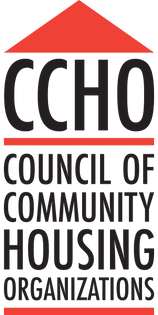A public bank could make affordable housing more affordable
How would a public bank fund affordable housing?
On Tuesday, Supervisor Sandra Lee Fewer introduced a resolution that establishes a timeline for creating a San Francisco public bank.
The successful implementation of a public bank could be a windfall for affordable housing advocates.
The push for a public bank has been in the works for nearly a decade. Interest in a public bank mounted during the Occupy Wall Street movement, when activists called for pulling The City’s money out of Wall Street banks. This led to then-Supervisor John Avalos commissioning the first study out of City Hall on a public bank in 2011.
Momentum picked up again in 2017 when Jackie Fielder and Kurtis Wu founded the SF Public Bank Coalition. At first the coalition focused on divestment. The logic is that if The City holds its money in a Wall Street bank like Bank of America, the bank can use it to fund projects like the Dakota Access Pipeline that run counter to San Franciscan’s values. If The City controlled its own bank, we would decide where to invest our own money.
Soon Fielder and Wu called on experts to explore the bank’s potential for investments in public services such as affordable housing.
“Jackie and Kurtis approached me to ask, ‘If there was a public bank, what would you like it to do?’” Theresa Imperial of direct service provider Bill Sorro Housing Program (BiSHoP) said.
Fernando Martí of the Council of Community Housing Organizations is another housing professional who joined the SF Public Bank Coalition.
He explained that the most straightforward way a public bank could lower costs for affordable housing would be to offer lower interest loans to affordable housing developers.
Martí told me that new affordable housing developments are funded in pieces. One of these pieces is a loan from a bank.
When home buyers purchase a home, they typically pay about 20 percent of the price upfront, then take out a mortgage so they can pay for the rest in pieces. Banks turn a profit from mortgages by charging interest. In exchange for borrowing money, debtors eventually pay more money over time than they would if they paid upfront.
Financing affordable housing development works similarly. Developers pay for some of the construction in cash up front. (I covered general obligation bonds in my last column, which are one way that cities raise this money to pay for affordable housing development.) Affordable housing developers borrow the remainder of the money from a bank.
The interest banks charge on loans given to affordable housing developers can be a huge expense. Up to 50 percent of the cost of infrastructure goes to interest, according to the Public Bank Institute.
So how could a public bank cut these costs? Wall Street executives get paid big time. Nearly $1.6 billion of the 2008 bank bailout went to executive bonuses and salaries, according to the Associated Press. While any bank, of course, needs to be financially solvent to continue issuing loans, a public bank would aim for modest surpluses rather than exorbitant profits.
Martí emphasized that offering low interest loans is just the tip of the iceberg when it comes to the potential for a public bank’s investment in affordable housing. Affordable housing developers can confidently speak to the impact low interest loans would have on their projects, because that’s something they’re already familiar with.
Since public banking at city levels is unprecedented in America—the state of North Dakota operates the only public bank in the U.S.—there are many avenues that have yet to be explored.
Martí hopes a public bank could invest in other city projects that The City isn’t currently funding. These could include buying up existing housing units to preserve as permanently affordable housing or providing loans to low income homeowners to build accessory dwelling units on their properties.
BiSHoP’s Imperial wants to see more money go toward community preservation. “We have to have a holistic approach to community development,” she said. “Preservation of art and culture is important to preserving our culture in The City.”
“There’s all sorts of things that we haven’t really figured out. We’re still exploring all the things that a public bank could do!” Martí said.
Chelsea Boilard, Supervisor Sandra Lee Fewer’s budget staffer, says the next step in the public bank effort is to set up a business plan.
The public bank would need to have money in it initially to issue loans. Estimates for the initial capital required range from hundreds of millions to $1 billion.
Nailing down where that money will come from is a goal of the task force of experts. The task force already has some promising leads on sources for this capital. In addition to the general fund, The City already has an investment fund which generates interest that goes into a separate pool of money. Other municipal governments including San Francisco Unified School District and City College of San Francisco could also be sources of funding, and some philanthropers have reached out to the coalition to express interest.
Once San Francisco has a business plan in place, it can apply for one of 10 banking licenses the state of California is issuing to municipal governments as a result of David Chiu’s AB 857, which passed through the legislature this year.
“San Francisco is the furthest along in the process in the country … we are in a good place to apply for one of these permits once the business plan is approved,” Boilard said.
